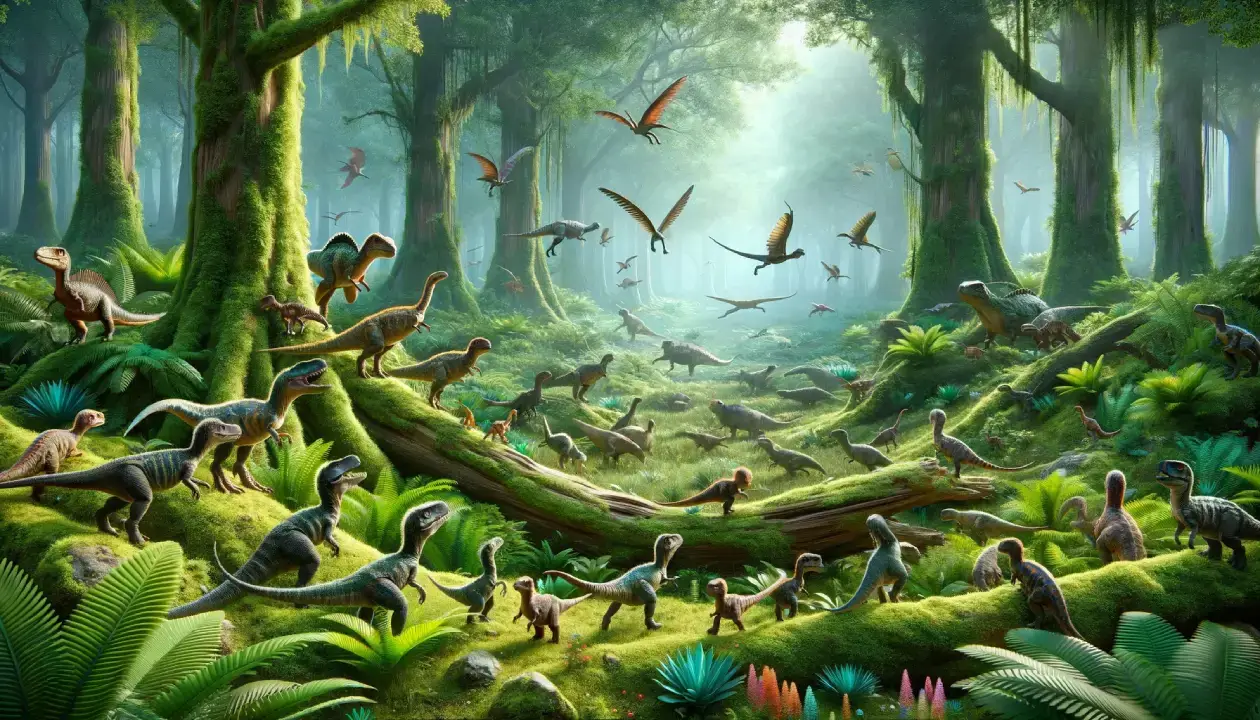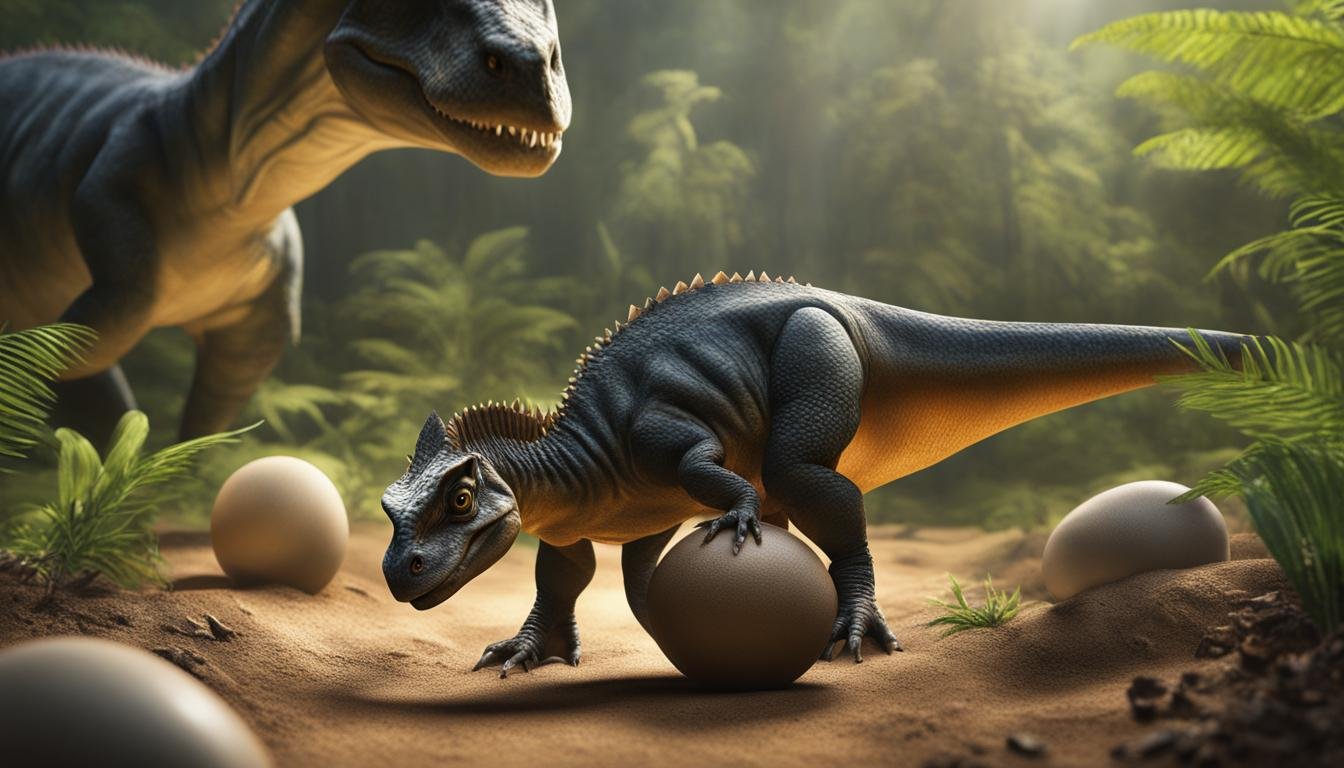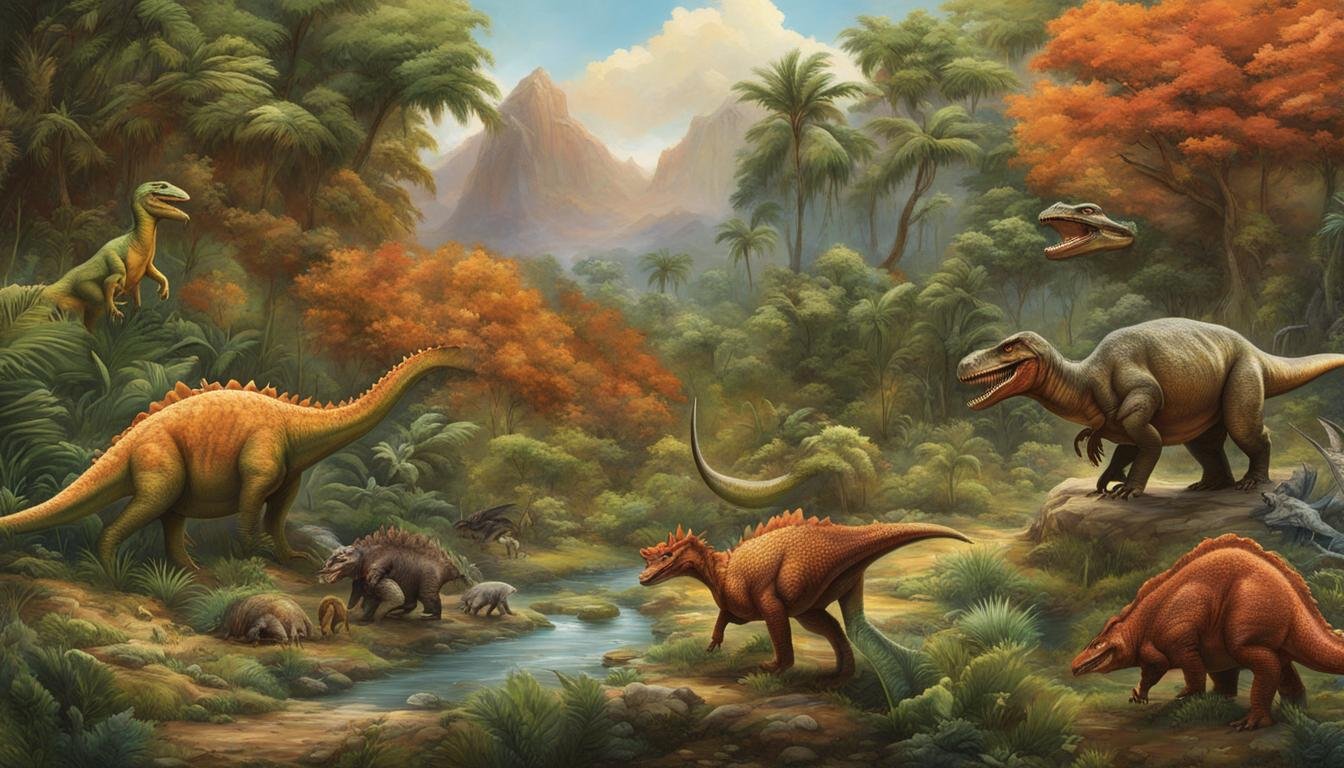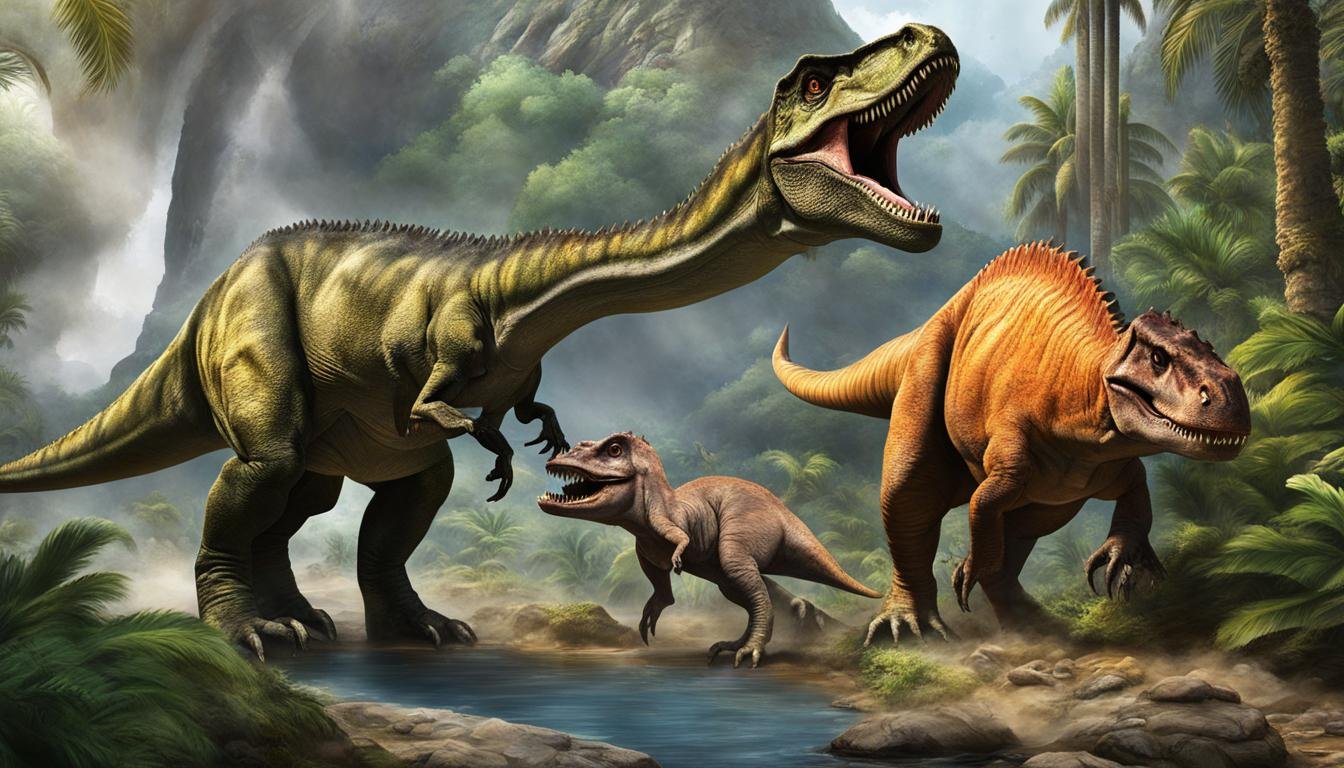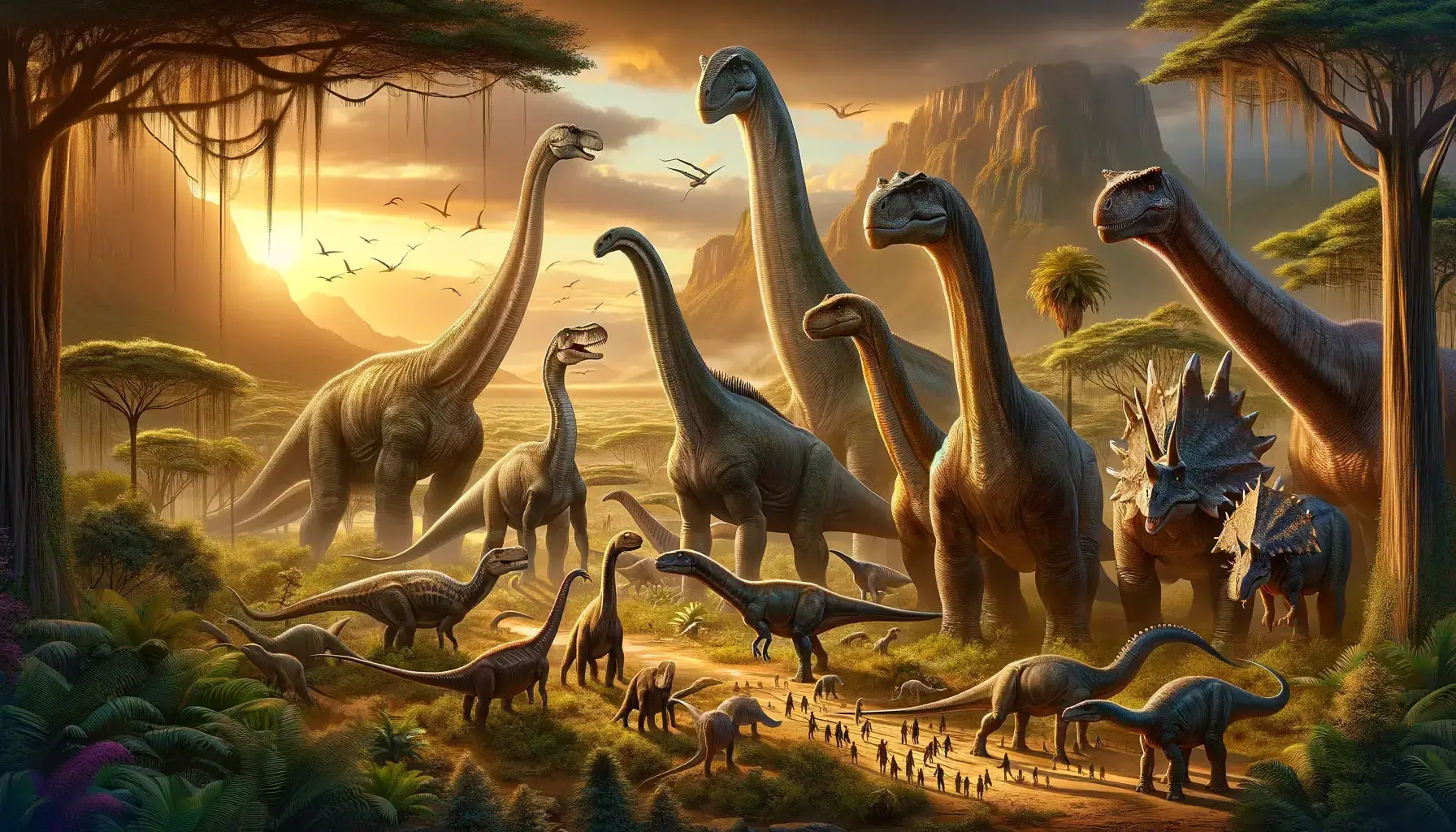When we think of dinosaurs, colossal giants like the T-Rex often steal the spotlight. But, not all dinosaurs were towering behemoths. The prehistoric world was also home to some surprisingly tiny dinosaurs. These pint-sized prehistoric creatures offer a fascinating glimpse into the diverse world of dinosaurs. From feathered flyers to tiny, fleet-footed runners, the smallest dinosaurs defy our typical dinosaur expectations.
Why Were Some Dinosaurs So Small?
But why this small size? In the diverse world of dinosaurs, being small came with its own set of survival benefits. For some, like the arboreal Microraptor, small size was likely a key adaptation for flight and maneuvering through dense foliage. For others, being small meant evading larger predators with greater ease, or exploiting food sources inaccessible to larger species. This diversity in size highlights the adaptability and ecological variety within dinosaur species.
How We Sized Up the Mini Marvels of the Past
To compile our exclusive list of the smallest dinosaurs, we focused on a crucial metric: the total body length from nose to tail tip. This measurement offers a clear perspective on just how tiny these prehistoric creatures were. While the team at PrehistoricSaurus.com hasn’t personally measured these diminutive dinosaurs, we’ve drawn upon the meticulous research and reconstructions of esteemed paleontologists. These experts have carefully analyzed and assembled fossil remains to gauge the full body size of these dinosaurs, providing us with the astonishingly small dimensions presented in this article.
It’s these scientific assessments that underpin our ranking of these miniature dinosaurs. Join us on an enthralling expedition back in time, to an era when these small but significant creatures roamed the Earth, proving that size wasn’t always everything in the age of dinosaurs.
The 10 Smallest Dinosaurs of All Time
Stepping into the diminutive domain of the smallest dinosaurs of all time, we uncover a world where small size didn’t mean a lesser place in the prehistoric panorama. These tiny titans, each with their unique traits and habitats, showcase the astonishing diversity of dinosaur life.
10. Lesothosaurus
| Characteristic | Detail |
|---|---|
| Length | 1 meter (3.3 feet) |
| Weight | Approx. 10 kilograms (22 lbs) |
| Habitat | Lesotho and South Africa |
| Period | Early Jurassic, around 200 million years ago |
| Diet | Herbivorous |
Lesothosaurus was a small, agile dinosaur from the Early Jurassic period and holds the 10th spot. Its fossils were discovered in Lesotho and South Africa. This dinosaur was about 1 meter (3.3 feet) long and weighed roughly 10 kilograms (22 lbs).
Lesothosaurus is particularly notable for its slender build and long legs, suggesting it was a fast runner. It is believed to have been herbivorous, feeding on low-growing vegetation, a diet inferred from its beak-like mouth and small, leaf-shaped teeth.
9. Micropachycephalosaurus
| Characteristic | Detail |
|---|---|
| Length | 1 meter (3.3 feet) |
| Weight | Approx. 4.5 kilograms (10 lbs) |
| Habitat | China |
| Period | Late Cretaceous, around 70 million years ago |
| Diet | Likely omnivorous |
Occupying the 9th position is the Micropachycephalosaurus, a tongue-twister and a tiny titan. It was one of the smallest known pachycephalosaurs, famous for their thick, domed skulls. Hailing from the Late Cretaceous period, this dinosaur roamed what is now China.
It measured about 1 meter (3.3 feet) in length and weighed approximately 4.5 kilograms (10 lbs). Though its exact diet is unknown, it likely included a mix of plants and small insects, based on the diet of related species.
8. Pisanosaurus
| Characteristic | Detail |
|---|---|
| Length | 1–1.3 m (3.3–4.3 ft) |
| Weight | Approx. 2 kg (4.4 lb) |
| Habitat | Argentina |
| Period | Late Triassic, around 230 million years ago |
| Diet | Herbivorous |
On to the 8th smallest, the Pisanosaurus, was a small, lightly built dinosaur. Discovered in Argentina, it lived during the Late Triassic period. Its estimated length was about 1 meter (3.3 feet), and it weighed around 2 kilograms (4.4 lbs).
This dinosaur is significant for being one of the earliest known ornithischians, a group that later included well-known dinosaurs like Triceratops and Stegosaurus. Pisanosaurus’s diet is speculated to be herbivorous, given its beak-like mouth and leaf-shaped teeth.
7. Microraptor
| Characteristic | Detail |
|---|---|
| Length | 77 cm (2.6 ft) |
| Weight | Approximately 1 kilogram (2.2 lbs) |
| Habitat | Liaoning Province, China |
| Period | Early Cretaceous, around 120 million years ago |
| Diet | Likely carnivorous or omnivorous |
The Microraptor, ranking seventh on our list, a feathery figure in the dinosaur world. This four-winged wonder, measuring about 77 centimeter (3.3 feet) in length, was not much larger than a modern raven. Found in what is now China, the Microraptor thrived in the early Cretaceous period.
Its most striking feature? The presence of flight feathers not only on its arms but also on its legs, suggesting it could have been one of the earliest flying dinosaurs, gliding between trees like a prehistoric bird.
6. Wannanosaurus
| Characteristic | Detail |
|---|---|
| Length | 60 cm (2 feet) |
| Weight | Approx. 2 kilograms (4.4 lbs) |
| Habitat | China |
| Period | Late Cretaceous, around 70 million years ago |
| Diet | Likely omnivorous |
Coming in at number six we have Wannanosaurus, a pint-sized dinosaur that lived during the Late Cretaceous period. Found in what is now China, it measured just about 0.6 meters (2 feet) in length and weighed approximately 2 kilograms (4.4 lbs).
Wannanosaurus is unique among small dinosaurs due to its thickened skull, a characteristic typical of pachycephalosaurs. Despite its small size, this feature suggests it might have engaged in head-butting or other forms of social interaction.
5. Lagosuchus
| Characteristic | Detail |
|---|---|
| Length | 51 cm (1.8 ft) |
| Weight | Not precisely known; likely lightweight |
| Habitat | Modern-day Argentina |
| Period | Late Triassic, around 230-209 million years ago |
| Diet | Likely carnivorous |
Lagosuchus takes the fifth spot in our countdown. A lesser-known but equally fascinating dinosaur. Native to the Late Triassic period, Lagosuchus was found in what is now Argentina. It measured roughly 51 centimeters (1.8 feet) in length.
This small dinosaur was a bipedal runner, believed to be agile and quick on its feet, traits that likely helped it survive in a world with larger predators. Despite its small size, Lagosuchus played a significant role in the evolutionary story of dinosaurs, representing an early stage in dinosaur development.
4. Parvicursor
| Characteristic | Detail |
|---|---|
| Length | 39 cm (1.28 feet) |
| Weight | Approx. 162 g (5.7 oz) |
| Habitat | Mongolia |
| Period | Late Cretaceous, around 70 million years ago |
| Diet | Likely carnivorous or insectivorous |
Parvicursor, securing the fourth position, is one of the smallest non-avian dinosaurs ever discovered. This tiny dinosaur lived during the Late Cretaceous period in what is now Mongolia. Parvicursor was astoundingly small, with an estimated length of just 39 centimeters (1.6 feet) and weighing around 162 grams (5.7 ounce).
Its size is comparable to that of a large chicken. This dinosaur was likely a fast runner, as suggested by its long hind legs and slender build, traits that would have been advantageous for escaping predators or hunting small prey.
3. Anchiornis
| Characteristic | Detail |
|---|---|
| Length | 34 cm (1.1 ft) |
| Weight | Approximately 110 grams (3.9 ounces) |
| Habitat | Northeastern China |
| Period | Late Jurassic, around 160 million years ago |
| Diet | Possibly insectivorous or omnivorous |
At number three, Anchiornis, was another feathered phenomenon of the late Jurassic period. Found in the same region as the Microraptor, Anchiornis was slightly larger, with a body length of approximately 34 centimeter (1.1 feet).
This feathered dinosaur, with a weight around 110 grams (3.9 ounces), was akin to modern birds in size and appearance. Its plumage, inferred from fossil evidence, indicates a colorful display, perhaps used for communication or mating.
2. Epidexipteryx hui
| Characteristic | Detail |
|---|---|
| Length | 25 cm (10 in) |
| Weight | Approx. 164 grams (5.8 ounces) |
| Habitat | Inner Mongolia, China |
| Period | Middle to Late Jurassic, 160 million years ago |
| Diet | Insectivorous |
Epidexipteryx hui is the runner-up in our list. This fascinating creature, with a length of only 25 centimeters (10 inch), weighed about 164 grams (5.8 ounces). It lived in the Middle to Late Jurassic period in what is now Inner Mongolia, China.
Epidexipteryx hui is notable for its bizarre appearance, featuring long, ribbon-like tail feathers and a beak-like mouth with no teeth. It’s presumed to have been an insectivore, based on its anatomy and the environment in which it lived.
1. Oculudentavis
| Characteristic | Detail |
|---|---|
| Length | 5 – 7 cm (2 – 3 in) |
| Weight | Under 30 grams (1 ounce) |
| Habitat | Myanmar |
| Period | Late Cretaceous, around 99 million years ago |
| Diet | Insectivorous |
Topping our list as the smallest dinosaur of all time is the Oculudentavis. This astonishingly tiny creature lived during the Late Cretaceous period in what is now Myanmar. Its estimated length is a mere 5 – 7 centimeters (2 – 3 inches), with a weight likely under 30 grams (1 ounce), making it smaller than many modern birds.
Oculudentavis was discovered through remarkable preservation in amber, allowing for an unprecedented view of its minute features. It had a bird-like beak filled with numerous tiny teeth, suggesting a diet of small insects. Its small size and unique adaptations highlight the incredible diversity and evolutionary experimentation of dinosaurs.
Conclusion: The Diversity of Dinosaur Size
The journey through the realm of the smallest dinosaurs reveals a fascinating aspect of prehistoric life: the incredible diversity in dinosaur size. From the towering giants like the Argentinosaurus to the tiny Oculudentavis, dinosaurs occupied every ecological niche available. This diversity not only speaks to the adaptability and evolutionary success of dinosaurs but also challenges our perceptions, reminding us that these ancient creatures were more varied and complex than often imagined.
The existence of such small dinosaurs also provides valuable insights into the ecosystems of the past. These miniature creatures likely played crucial roles in their habitats, from pollinating prehistoric plants to keeping insect populations in check. Their survival and evolution over millions of years underscore the intricate balance of prehistoric ecosystems.
In exploring the smallest dinosaurs, we gain a broader understanding of the Mesozoic era, a time when life on Earth flourished in all its forms, both large and small. The study of these tiny titans continues to shed light on the rich tapestry of life that once covered our planet.
For those intrigued by the extremes of dinosaur size, the Top 10 Largest Dinosaurs offers a fascinating contrast, showcasing the giants that walked the Earth. Discover the behemoths that roamed the ancient landscapes, and immerse yourself in the awe-inspiring diversity of the dinosaur world.

